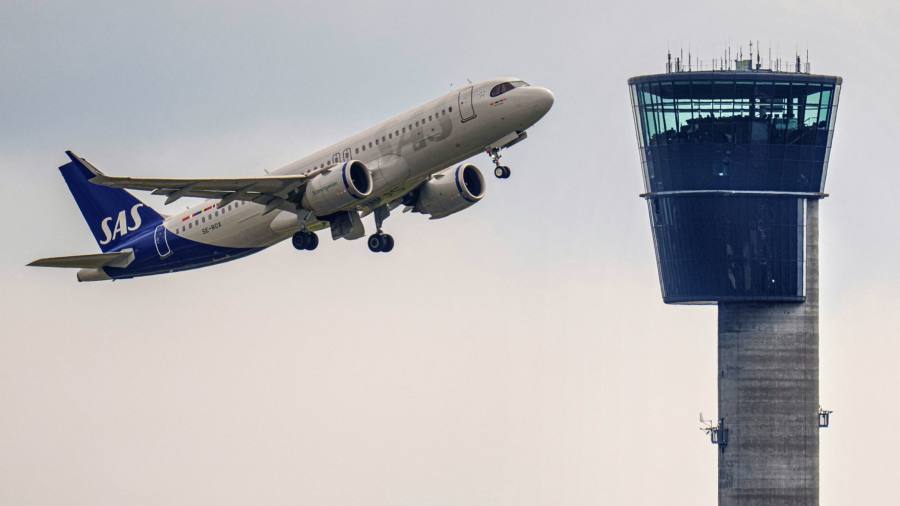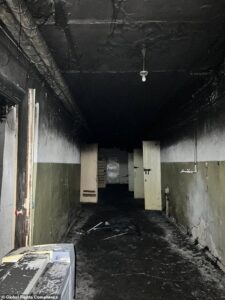
Receive free Airlines updates
We’ll send you a myFT Daily Digest email rounding up the latest Airlines news every morning.
Staffing shortages at air traffic control have delayed passengers in Europe this summer and forced US airlines to cut flights, sparking an industry blame game on both sides of the Atlantic.
The shortages, combined with airspace closures in Europe, have fuelled a 37 per cent increase in delayed flights on the continent over the past year, according to air traffic manager Eurocontrol.
Air traffic control staffing and capacity issues were responsible for about half the delays in July, during the peak travel period, Eurocontrol added.
Across the Atlantic, the US Federal Aviation Administration asked airlines in March to cut back flying in New York’s crowded airspace due to air traffic control staffing shortages, while United Airlines chief executive Scott Kirby criticised air traffic control for disruption at the airline’s New York hub.
A report in June found widespread staffing shortages, with controllers at some facilities working mandatory overtime and six-day weeks to manage the shortfall.
The problems have threatened to dent the airline industry’s recovery from the Covid-19 pandemic. Airlines including British Airways owner IAG and Air France-KLM have recently reported booming profits off the back of high ticket prices and huge demand for transatlantic travel.
But air traffic control staffing shortages are costing airlines millions in foregone ticket sales and increased operational expenses. Last year in Europe, delays cost carriers more than €800mn, according to Eurocontrol figures.
While the scale of the problem is smaller than in 2022, when staff shortages afflicted the whole industry, the combination of increasingly congested airspace and a lengthy training process for air traffic controllers means the problem is unlikely to be resolved quickly.
Delta Air Lines chief Ed Bastian and easyJet chief executive Johan Lundgren are among several airline executives on both sides of the Atlantic who have voiced their frustration at traffic control problems.
“We needed a good recruiting and hiring plan coming out of the pandemic,” Bastian said. “The airlines had it. I’m not sure the air traffic control system did.”
Russia’s full-scale invasion of Ukraine has compounded the issue. The closure of a fifth of Europe’s skies has compressed tens of thousands of flights a day into a smaller sliver of airspace.
London’s Gatwick airport, a hub for easyJet, was a particular sore spot last week when scores of flights were cancelled. Labour unrest has made things worse for travellers in some places. French air traffic controllers have staged walkouts, while Eurocontrol has warned of a possible strike at its Brussels headquarters over the next six months.
Europe has a shortfall of between 700 and 1,000 air traffic controllers. This was largely due to lay-offs and recruitment freezes during the pandemic, coming after decades of under-investment, said Frédéric Deleau, executive vice-president for Europe at the International Federation of Air Traffic Controllers’ Associations.
In the US, both airlines and the government-funded FAA have been reluctant to make the investments in staffing and technology needed to manage increasingly crowded airspace, said industry analyst Seth Miller of aviation website PaxEx.Aero.
EasyJet’s Lundgren said that while his industry was “better prepared” than it was last year, “we still have these challenges that really sit outside the control of airlines and airports”.
Training a new air traffic controller takes two to three years, noted Deleau, who warned that retirement would put staffing under further strain.
In the US, weather has caused 70 per cent of the delays, according to data from the FAA. Staffing has been responsible for less than 3 per cent of delays this year, down from 12 per cent for the same period last year.
Still, 20 out of the 26 busiest air traffic control centres and towers in the US employ 85 per cent or less of their targeted staffing level, according to a report released in June by the inspector-general’s office of the Department of Transportation.
The number of fully certified controllers in the country dipped 9 per cent between 2012 and 2022, according to the inspector-general’s report. A workforce plan the FAA submitted to Congress in May said there were 10,600 fully certified air traffic controllers and 3,100 trainees in the year to October 2022.
In an attempt to catch up, the FAA is planning to hire 1,500 controllers this year and another 1,800 in 2024. But the National Air Traffic Controllers Association union disagrees with the agency over how many controllers are required.
A working group that includes the union said the FAA needs about 14,600 fully certified controllers — about 2,600 more than the agency’s target level.
Natca president Rich Santa criticised the FAA’s “flawed staffing model”. “The status quo is no longer sustainable,” he said.
Delta’s Bastian said the US should make it a “national priority” to invest in aviation infrastructure more broadly. The FAA and air traffic controllers “are hard-working, but they’re undermanned and underinvested in”, he said. “There’s no shortcut solution to this.”
Miller said airlines “have long tried to force too many flights and too many planes through the eye of the needle” of air traffic control.
“Who is at fault on any given day at any given time will move, but everybody is part of the blame,” he said. “It’s not a surprise that we find ourselves here.”
Additional reporting by Kristo Mikkonen in London

